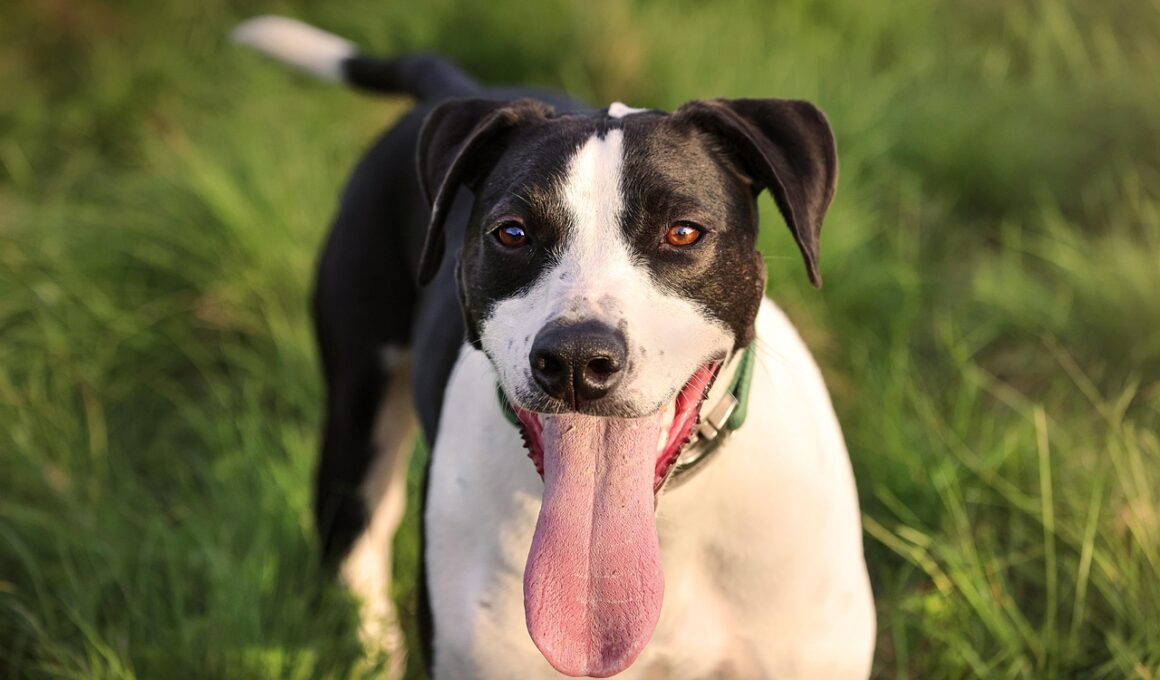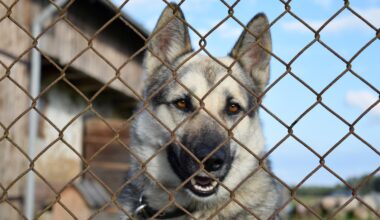The Role of Exercise in Modifying Rescue Dog Behavior
Understanding a rescue dog’s behavior can be challenging, but exercise plays a vital role in the transformation process. Dogs that come from stressful environments often display anxiety-related behaviors. Regular exercise is essential for helping them manage this anxiety. Engaging your rescue dog in physical activities helps alleviate pent-up energy and stress, allowing them to settle down. Additionally, exercise fosters bonding between you and your dog, enabling them to feel more secure in their new home. Walking, playing fetch, and exploring new environments encourage learning and adaptability. It creates positive experiences that enhance confidence and reduce fears in various situations.
Another critical aspect of exercise is its influence on aggression in rescue dogs. Many dogs may develop aggression from fear or lack of socialization in previous environments. Regular physical activities provide opportunities for proper social interaction with other dogs or people, allowing your rescue dog to learn appropriate behavior. With consistent exercise, you can help your dog build trust and confidence, which directly impacts their behavior positively. Training should often accompany exercise, leveraging the calming effects of physical activity to reinforce social skills and commands. Through structured play and exercise routines, dogs can learn to communicate their feelings better.
The Importance of Consistency
Consistency in exercise routines is crucial when modifying a rescue dog’s behavior. Establishing a daily schedule creates reliability for your dog, which reduces anxiety and behavioral issues. Rescue dogs very much benefit from predictability, as it helps them establish a sense of security in their environment. This routine should include various activities that stimulate not just their bodies but also their minds. Incorporating different exercises and training games keeps things engaging and rewarding for your dog. Make sure you monitor their progress and adjust the routines as needed, always maintaining a positive approach.
The social aspect of exercise cannot be overlooked. Engaging your rescue dog in group activities at dog parks or training classes can significantly help modify their behavior. Watching how other dogs interact provides insights into proper behavior and social cues. Interaction with different breeds offers your dog exposure to diverse types of canine behavior, promoting adaptability. However, it’s important to monitor interactions closely, as not all dogs may retain their best behavior in social settings. Introducing your rescue dog to gradual exposure in such environments can create meaningful experiences.
Benefits of Mental Stimulation
Exercise doesn’t solely involve physical activity; mental stimulation is equally essential for rescue dogs. Incorporating brain games and puzzles during exercise can provide significant behavioral benefits. Activities that require focus, such as sniffing games, can help engage their minds. A mentally stimulated dog often proves to be a calmer companion, reducing destructive behaviors associated with boredom. The combination of physical and mental exercise leads to well-rounded development and positive behavioral changes in rescue dogs over time. Furthermore, this work builds an effective bond between you and your furry friend, encouraging positive interactions.
Providing a safe space for exercise significantly impacts a rescue dog’s sense of security. If restrictions on outdoor activities exist, try setting up an indoor obstacle course or use toys to promote movement. Ensuring your rescue dog has ample opportunities for both supervised outdoor exploration and safe indoor activities encourages learning about their new environment. This understanding greatly contributes to their overall adjustment. As they grow familiar with their surroundings, you will likely witness positive changes in their behavior. Every step taken creates a healthier and happier dog.
Monitoring Progress and Tailoring Needs
Regularly monitoring your rescue dog’s progress during exercise is essential. Each dog has unique needs depending on their past experiences and personality. Understanding these individual needs will help you create tailored activity plans. Celebrate small victories in their behavioral changes to motivate continued improvement. This positive reinforcement approach encourages your dog to engage more during exercises. Be patient, as modifications may take time, but the rewards of understanding and modifying your dog’s behavior through exercise are immeasurable.
In conclusion, the role of exercise in modifying rescue dog behavior is multifaceted and indispensable. Engaging them in regular physical and mental activities fosters improvement by building confidence, reducing anxiety, and enhancing social skills. Consistency and variety in these routines ensure an enjoyable experience for your dog, strengthening the bond you share. Always respect their individual needs and create supportive environments during activities, as this will significantly affect their behavior positively. Remember, patience and love will guide you through this transformative process, leading to a happier life together.


